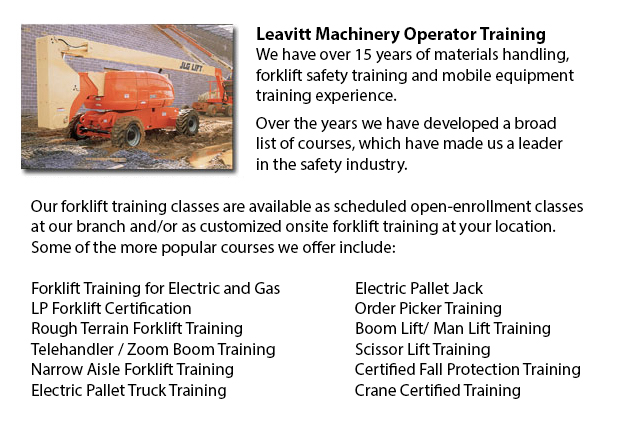
Aerial Platform Training Penticton - Aerial lift trucks might be used to accomplish many distinctive tasks done in hard to reach aerial spaces. Some of the duties associated with this kind of lift include performing daily preservation on buildings with lofty ceilings, repairing telephone and utility lines, raising heavy shelving units, and trimming tree branches. A ladder could also be utilized for some of the aforementioned projects, although aerial platform lifts provide more safety and strength when correctly used.
There are a lot of designs of aerial lift trucks existing on the market depending on what the task required involves. Painters sometimes use scissor aerial jacks for example, which are grouped as mobile scaffolding, handy in painting trim and reaching the 2nd story and above on buildings. The scissor aerial lifts use criss-cross braces to stretch and lengthen upwards. There is a platform attached to the top of the braces that rises simultaneously as the criss-cross braces raise.
Cherry pickers and bucket trucks are another version of the aerial lift. Typically, they possess a bucket at the end of an elongated arm and as the arm unfolds, the attached bucket lift rises. Platform lifts utilize a pronged arm that rises upwards as the lever is moved. Boom hoists have a hydraulic arm that extends outward and hoists the platform. All of these aerial lift trucks call for special training to operate.
Training courses offered through Occupational Safety & Health Association, known also as OSHA, deal with safety procedures, system operation, upkeep and inspection and machine cargo capacities. Successful completion of these education courses earns a special certified license. Only properly qualified individuals who have OSHA operating licenses should run aerial hoists. The Occupational Safety & Health Organization has established guidelines to uphold safety and prevent injury when utilizing aerial platform lifts. Common sense rules such as not using this machine to give rides and making sure all tires on aerial lifts are braced in order to hinder machine tipping are mentioned within the rules.
Unfortunately, figures illustrate that more than 20 operators die each year while operating aerial hoists and 8% of those are commercial painters. The majority of these mishaps are due to inappropriate tire bracing and the lift falling over; therefore some of these deaths had been preventable. Operators should ensure that all wheels are locked and braces as a critical safety precaution to prevent the device from toppling over.
Marking the neighbouring area with obvious markers need to be used to safeguard would-be passers-by so they do not come near the lift. Furthermore, markings should be set at about 10 feet of clearance amid any electrical cables and the aerial lift. Lift operators must at all times be properly harnessed to the hoist while up in the air.
-
Forklift Certification Schools Penticton
Forklift Certification Schools Penticton - In North America, forklift certification is mandatory, making forklift training programs essential for both the business and their employees working as operators of forklifts. Forklift training focuses on sa... More -
Telehandler Training Courses Penticton
Telehandler Training Courses Penticton - The employer has the responsibility to make sure that their personnel are trained to work proficiently utilizing telehandler machinery. The workers have to be assessed for their ability to utilize the machine.... More -
Certified Fall Protection Training in Penticton
There are many injuries at work linked to falling and lots of fall-related deaths reported each and every year. Most of these instances might have been prevented with better training, better precautions in place, and by properly equipping employees b... More -
Zoom Boom Training Penticton
Zoom Boom Training Penticton - Zoom Boom Training is designed to train operators on variable reach forklifts. The objectives of the training are to impart an understanding of the physics of the machine, and to outline the operator's job. This course... More -
Crane Training Schools Penticton
Crane Training Schools Penticton - We have designed various Mobile Crane Operation programs at our Crane Training Schools. These programs are recommended for the experienced operator who needs re-certification or certification, and for inexperienced... More -
Aerial Lift, Boom Lift, Man Lift, Scissor Lift Training in Penticton
Lift tables or also referred to as scissor hoists can lift up both individuals and materials vertically. They are normally utilized in industrial, construction and commercial environments. Normally, the use of a scissor forklift is to lift and lower... More -
Forklift Training Program Penticton
Forklift Training Program Penticton - The forklift is a common powered industrial vehicle which is in wide use nowadays. They are occasionally known as hi los, lift trucks or jitneys. A departments store will utilize the forklift to unload and load m... More -
Overhead Crane Training Penticton
Overhead Crane Training Penticton - An overhead crane is a large crane used to move and lift huge, heavy objects that cannot be lifted by hand. An overhead crane is normally fixed in position while in use. These machines are capable of moving huge vo... More

Forklift Training Penticton
TOLL FREE: 1-888-254-6157
Penticton, British Columbia
forklifttrainingpenticton.com
Email Us
About Us


